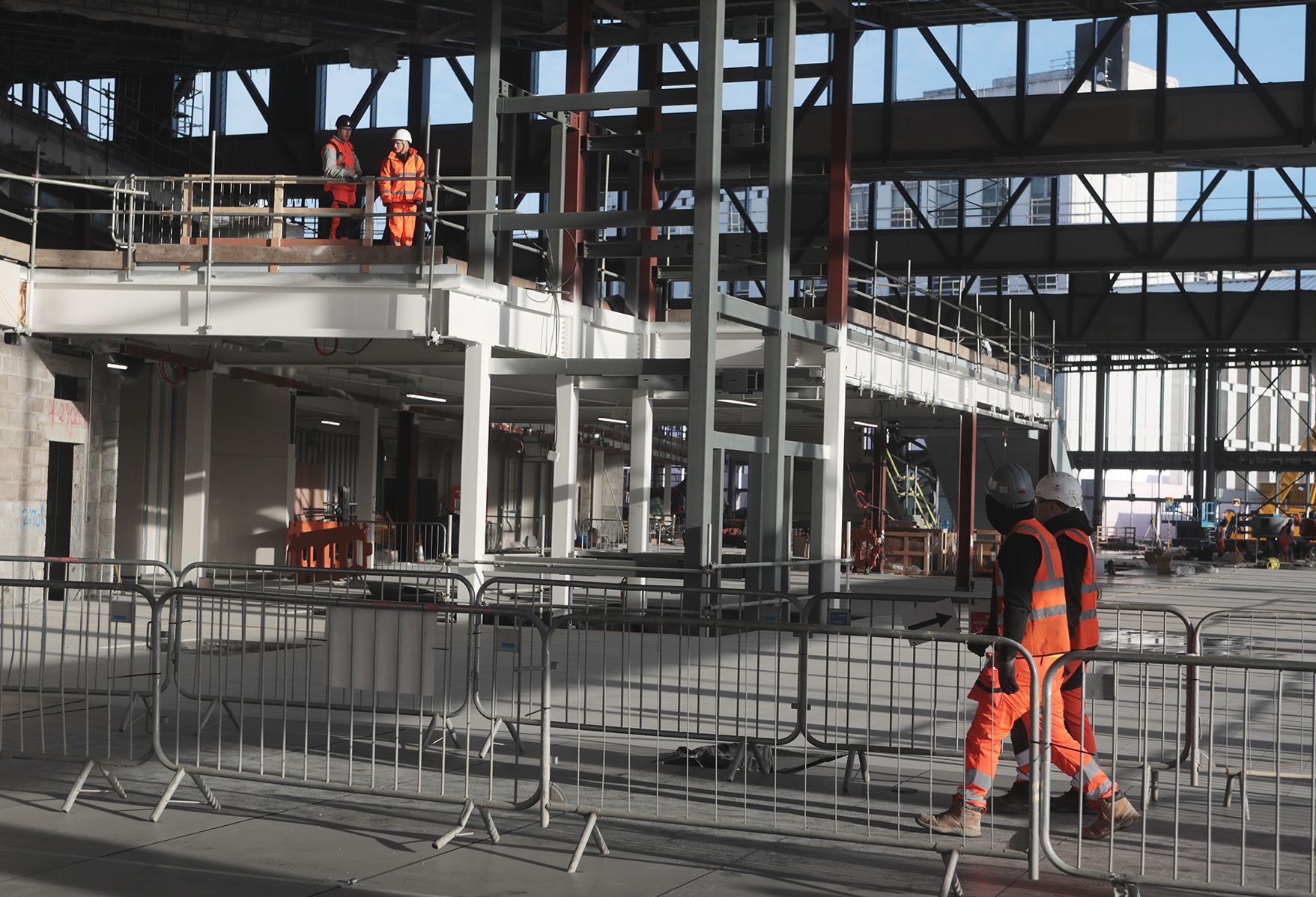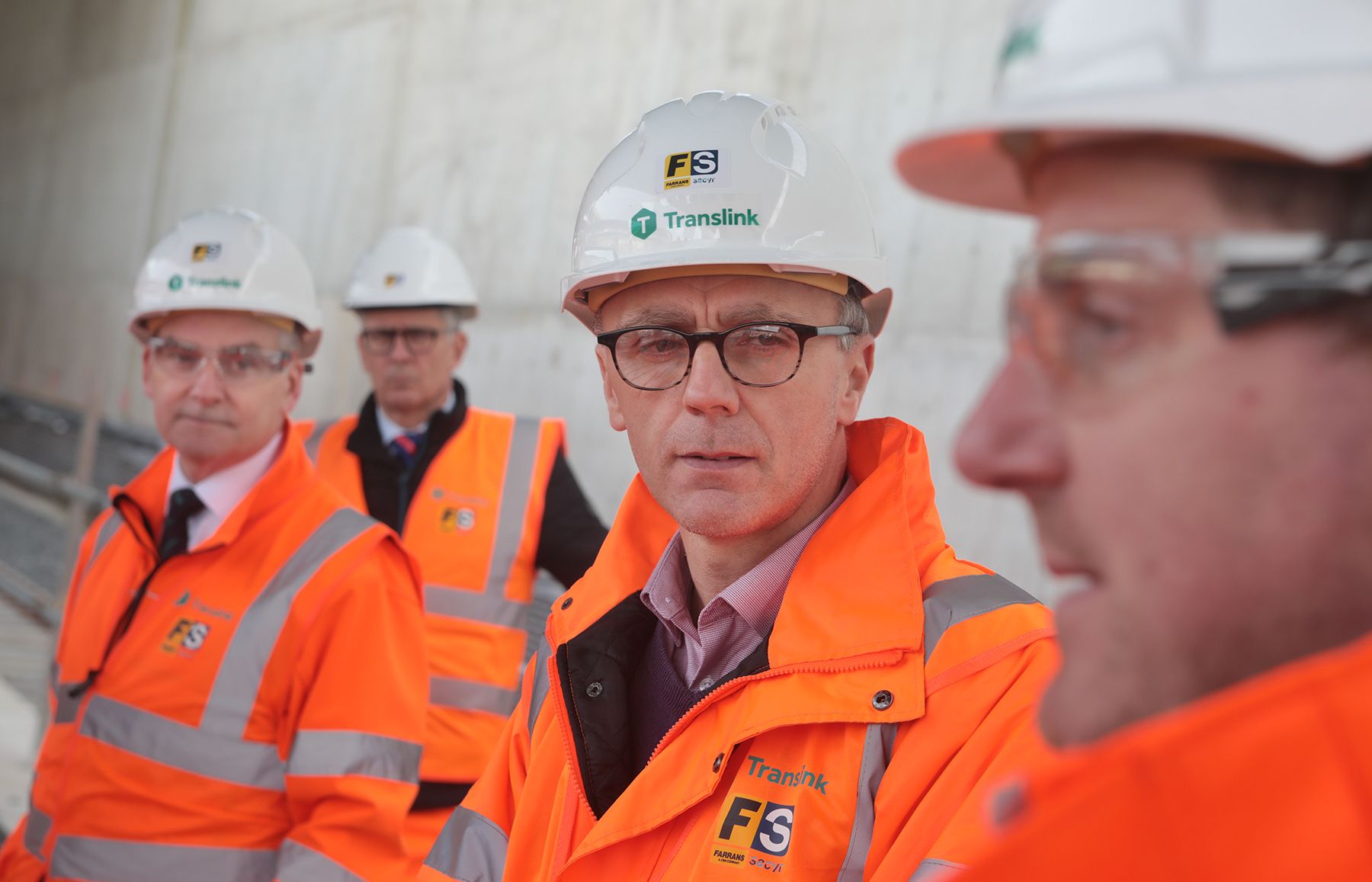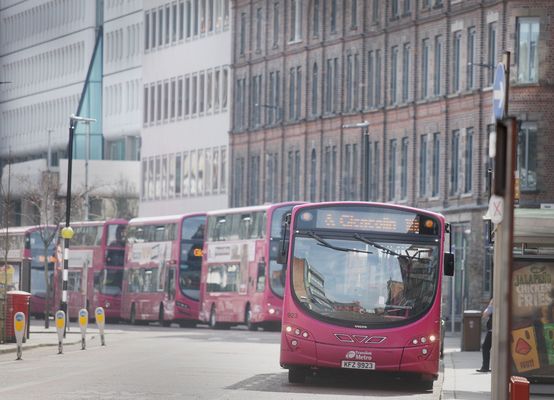BELFAST’S new transport station – the Belfast Grand Central – is entering into its final stages with plans for what will be Ireland’s largest integrated transport hub opening near the end of 2024.
The mammoth project aims to completely redevelop the bottom of Grosvenor Road with hopes that the vast redevelopment will regenerate the areas of the Lower Falls and Sandy Row. Work over the next 20 years will also see land in the area owned by Translink redeveloped to create the new city neighbourhood of Weavers Grange beside the station.
The mezzanine of the new station under construction
The new station will feature eight railway tracks and 26 bus stands making it the largest integrated transport facility on the island and will completely replace the Europa Bus Centre and Great Victoria Street Station which will both be demolished with future plans to build housing, office space and other projects on the sites.
Translink said work in ongoing to increase connectivity to Dublin and the Enterprise service will be switching from Lanyon Place to the new station. Translink said the new station is expected to cater for up to 20 million passenger journeys a year. The area outside the station will also see the roads widened to accommodate more pedestrians and there are also plans for 200+ spaces for bicycle parking.
The new station will feature eight railway tracks, four more than Grand Central Station currently has
During a media tour this week of the building site it is obvious how much work has been done at the site in a short amount of time with contractors working night shifts and weekends to ensure the station is ready for opening at the end of 2024. To complete the works Translink said towards the end of 2024 there will be a 12 week period in which all transport will have to be re-routed to the new station, meaning there will be disruption to normal services.
However Duncan Mcallister, Head of Belfast Grand Central Station and Weavers Cross Programme, said the company are working on a ‘huge logistical plan’ at the moment so public transport will be able to run as normal with replacement services.
A point which stood out during the tour was Translink's emphasis on working with local communities and groups such as the community at the bottom of the Grosvenor Road in West Belfast and Sandy Row in South Belfast.
Translink officials at the site said that 90 per cent of workforce were local with 180 workers on site at the moment and 50 or 60 office staff.
Duncan Mcallister said Translink had included contractural requirements to recruit workers from local communities.
“Part of Translink’s contractural requirements include local jobs contracts which means we have social and economic clauses in all our contracts and to date all of our contractors have these contracts and all have beaten their targets for recruiting local jobs and that includes apprenticeships and people from marginalised communities to get them jobs and skills. Some have gone on to join the construction teams at the site and others have gone on to other projects.
Chris Conway, Director of Translink, Duncan Mcallister Head of Belfast Grand Central Station Project and Duane McCreadie of SACYR 
Duane McCreadie, Construction Director of SACYR, one of the companies involved in building the station, said: “We’ve organised outreach projects to over 2,500 school children in the local area and also brought them on site to see the work. We’ve had primary school children as well as those doing their GCSE’s and A-Levels and we’ve had 60 spaces which have been filled by people from marginalised local communities who have been able to get full-time jobs and it’s been great to give something back to the local and wider community.”
Duncan Mcallister continued: “We have been working very closely with the local communities in Sandy Row in South Belfast and the Grosvenor/Lower Falls in West Belfast.
“Both communities continue to be supporters of the project because they’ve seen the teams going into the local schools and community projects so we see them, they see its local people delivering the project and we can work together to deliver the project which will transform the local area and public transport in Northern Ireland.”







